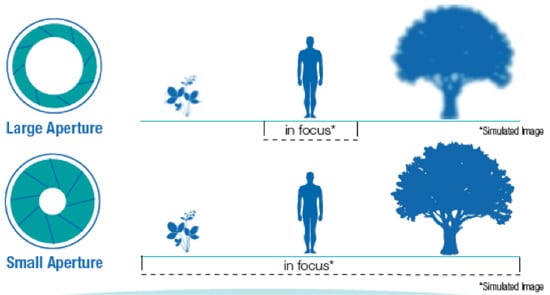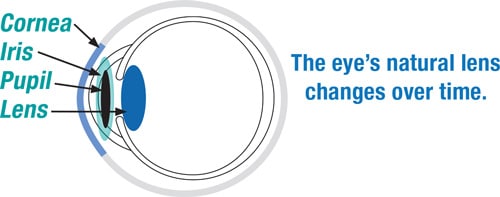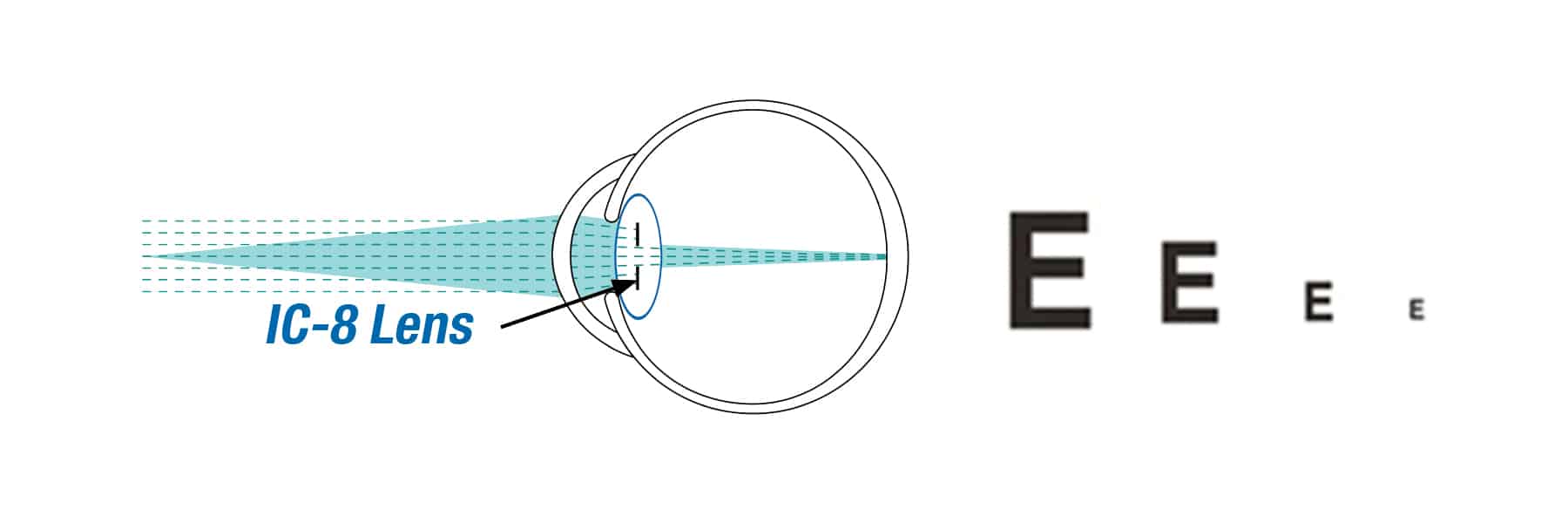Understanding the Pinhole Effect
The IC-8 lens uses an advanced pinhole mini-ring design, allowing only focused light to enter the eye so you can see clearly from near to far. The foundation of the pinhole effect, also known as small aperture optics, is based on the same principle as an f-stop camera, in which:
- A photographic lens aperture is used to adjust the amount of light reaching the film or image sensor
- Depth of focus, or range of vision, is a function of both the pinhole size and focal length of the camera lens
- Smaller apertures produce a longer range of vision

Change Over Time
We usually begin to notice a decrease in our quality of vision somewhere in our 40s. It likely starts with blurry near vision and progresses to loss of image sharpness. This decrease in visual quality is due to changes in your eye’s natural lens. Utilizing a small pinhole, the IC-8 lens helps restore your eye’s natural range of vision so you are able to see from near to far seamlessly.


In our 40s near vision begins to blur making it difficult to see up close without glasses or contact lenses.
In this image you can see the light rays entering the eye, but the lens is unable to focus the light due to a cataract. This makes it difficult to see clearly at any distance.

Replacing the eye’s natural lens with an IC-8 lens restores your natural range of vision.
The IC-8 small aperture lens, once implanted, focuses the light rays from objects into a sharp image on the back of the eye, helping bring objects into clear focus from near to far.
Learn more about the IC-8 lens and how it is helping cataract patients regain clear vision and achieve spectacle freedom.


